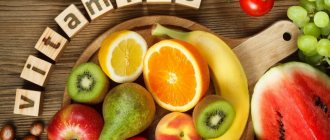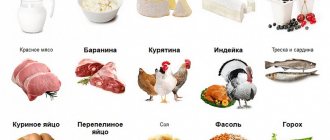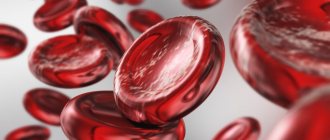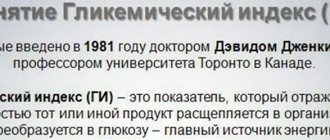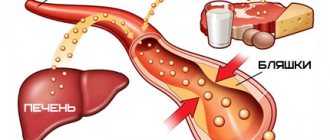Indications for the study
Hemoglobin testing is performed during a general blood test. At the same time, the quality and quantity of red blood cells are studied in parallel.
The hemoglobin level does not directly allow diagnosis. But it is assessed by doctors along with the results of other studies and clinical symptoms, as it is an important characteristic of the body’s condition.
A general blood test should be taken regularly by every person who monitors their health. This makes it possible to prematurely identify the presence of hidden diseases that have not yet begun to manifest themselves. In many cases, timely treatment leads to positive results.
Typically, a general blood test is taken once a year. During pregnancy (for prevention purposes), it is taken much more often. The study makes it possible to prevent a sharp deterioration in the condition of the expectant mother, as well as oxygen starvation of the fetus.
Blood sampling for general analysis is performed as a baseline test during hospitalization and before surgery to avoid unexpected complications. It is also important to conduct analysis to monitor the effectiveness of drug treatment.
The reason for taking a test for hemoglobin levels may also be the patient’s own complaints, for example, fatigue, increased drowsiness, etc. This may indicate not only a reduced protein level, but also the presence of serious diseases, including malignant neoplasms.
Hemoglobin norm
The amount of hemoglobin is directly related to the number of red blood cells in the blood. Red blood cell norms:
- for men 4.5-5.5*1012 / liter;
- for women – 3.7-4.6*1012/liter.
The amount of hemoglobin is:
- in men 125-145 g/l;
- in women 115-135 g/l.
In addition, there are special indicators that determine the amount of hemoglobin necessary for the normal functioning of the body. This is a “color indicator” indicating the degree of saturation of red blood cells with protein. In normal condition, it ranges from 0.8 to 1.1 units. Studies also determine the saturation of each individual red blood cell. On average, this figure should be from 28 to 32 picograms.
How to increase hemoglobin in an elderly person
There are several ways to increase hemoglobin in the blood of an elderly person, which depend on the type of anemia.
1. For iron deficiency anemia (IDA).
This is the most common type of anemia among older people and a blood test will show:
- the presence of microcytosis and hypochromia of erythrocytes;
- the process of reducing serum iron levels;
- a decrease in ferritin and an increase in the iron-binding function of blood serum, which indicates a deficiency of iron-containing components.
Anemia in an elderly person is determined by the color indicator of the blood, which is calculated using the formula (the hemoglobin indicator is divided by the number of red cells). Its norm is from 0.85 to 1.1. If there is iron deficiency in an elderly person, this value will be below 0.7. Hemoglobin in the cell (standard from 27 to 35 picograms) is also determined by a blood test. The blood is also examined for the percentage of microcytes and the total number of blood cells.
If there are symptoms of hypochromia, studies speak of IDA in an elderly person.
If you need to accurately determine whether there is anemia or not, then the blood serum is examined for the amount of iron. This information needs to be known before therapeutic therapy to increase hemoglobin with iron-containing drugs is prescribed. If the cause of anemia is a lack of vitamin B12 or folic acid, then differential diagnosis is carried out.
It is necessary to begin treatment of the cause that caused the pathology, and not its consequences. This means we need to consider the factors that provoked the process of decreasing hemoglobin in an elderly person. Adjuvant therapy that raises hemoglobin includes iron-containing drugs. However, often due to the impossibility of surgery, this method of treatment is the main one.
There are strict requirements for drugs that increase hemoglobin:
- Contains a large amount of divalent iron.
- The presence of additional components to improve the absorption of metal ions.
- Ease of use (dosage and conditions of administration).
- Not very high cost.
If you take divalent metal fumarate or ferrous sulfate in an amount of 150–300 mg, the iron level will rise. You need to take 1 or 2 tablets during the day with meals.
Side effects may occur when taking this group of drugs. These may be disturbances in the functions of the stomach (nausea, vomiting), intestines (frequent constipation). Sometimes the vascular walls of the veins become inflamed, painful sensations appear behind the sternum, as well as hypotension and allergic reactions.
The level of iron in the blood is increased by adhering to a special diet. For example, meat can be of great benefit: the bioavailability of the metal in it reaches 30%.
2. Anemia due to deficiency of vitamin B12 and folic acid.
If there is a lack of folic acid or vitamin B12 in the human body, a disorder occurs in the cellular synthesis of DNA in the blood. With this type of anemia, red blood cells turn into macrocytes.
Indicative factors:
- Increase in blood color index.
- Presence of megalocytosis.
- Presence of nuclear remains in erythrocytes.
- The presence of leukopenia, thrombocytopenia, reticulocytopenia.
- Raising serum iron levels.
- Development of megaloblastic hematopoiesis in the bone marrow.
- Presence of mental and neurological disorders.
This kind of anemia and hemoglobin deficiency in older people may occur due to:
- progressive atrophic gastritis or malignant tumor in the fundus of the stomach;
- inflammatory processes in the small intestine, gastric surgery;
- the presence of diverticulosis and pancreatitis;
- dysbacteriosis and chronic hepatitis;
- lack of substances necessary for the body;
- improper use of medications.
This type of anemia is more accurately diagnosed after a bone marrow test. But it happens that it is not possible to conduct such a study due to objective reasons. In this situation, the doctor makes empirical conclusions and prescribes a course of vitamin B12 to the elderly patient. To improve the general condition and composition of the blood, you will only need 1 or 2 injections.
If the diagnosis is confirmed, long-term vitamin therapy is carried out. At the beginning of treatment, an elderly person is given injections daily until the hemoglobin level is completely normalized. Then the number of injections is reduced to 1-2 every 30 days. If therapy is not enough, there is a risk of relapse of the disease. For anemia caused by a lack of vitamin B12, folic acid is not prescribed, since there is a high probability of neurological symptoms.
We recommend
“Pneumonia in old age: diagnosis and treatment methods” Read more
Lack of folic acid in the body of an elderly person can cause anemia, very similar to B12 deficiency. However, it is not that common. In addition, the factors that provoke it are different. The causes of this type of anemia:
- the human body experiences constant alcohol intoxication;
- cancer, Ritter's exfoliative dermatitis, destruction of red blood cells - all this leads to increased consumption of folic acid by the body;
- the presence of nutritional deficiency, as well as enteritis, aggravated by malabsorption;
- Anticonvulsant drugs, as well as Methotrescat, Barbiturate, Triamterene, have an adverse effect on the body condition of an elderly person.
If a pensioner has a severe form of the disease due to a significant lack of hemoglobin, he will be prescribed folic acid injections. In other cases, a sick person must take this drug in tablets (the norm is 5 mg per day). If it is impossible to eliminate the factor that provokes anemia (tumor, hemolysis), patients are prescribed a long course of folic acid. In cases where a pensioner has epilepsy, treatment must be carried out very carefully, since neurological symptoms may intensify.
How to increase hemoglobin in an elderly person with diet? It is very useful for anemia to eat:
- meat and meat products (for example, sausages);
- liver, fish;
- eggs (yolks);
- whole grain flour products;
- sunflower seeds, pumpkin and sesame seeds;
- nuts, especially pistachios;
- various greens: spinach leaves, fennel, parsley;
- various types of cabbage and beets;
- black currant;
- wheat germ and sprouts;
- apricots, prunes, figs, dates.
Practical recommendations for increasing hemoglobin:
- Drink 1 cup of fermented yeast for 5 days.
- Pickled beet juice (200 ml per day) is very useful.
- Soups made from bran (wheat or rye) with cream help to normalize hemoglobin levels in older people.
- You need to take 20–25 g of nettle tincture prepared in May every day before bed.
- Apples, carrots (grated), and parsley are also very useful.
- The diet should contain high amounts of protein and low fat.
- Dried apricots, 3-4 pieces per day, help increase hemoglobin. It is not recommended to eat the seeds, as they are poisonous.
- Adhering to a meal schedule (4–5 times a day) has a positive effect on the body. Moreover, breakfast should be more substantial, and dinner should be light.
- Products containing vitamin B1 and any type of whole milk bring invaluable benefits.
With the help of such a diet, you can increase hemoglobin in an elderly person and eliminate the early symptoms of anemia. Modern medicine has special drugs that cure this disease. You can combine drug therapy and treatment with folk remedies. If you strictly follow the recommended recipe and dosage, then natural medicines will provide significant assistance in eliminating the problem. After a month-long treatment course, it is necessary to take a blood test. If the hemoglobin level is insufficient, therapy should be continued.
There are methods that allow you to quickly increase hemoglobin in an elderly person at home.
Here are the most effective:
- Peel the carrots, black radishes, and beets. Wash and grate on a fine grater. Squeeze the juice from the resulting mixture, mix equally and place in the oven for 3 hours. Take 1 tablespoon daily.
- An excellent remedy for raising hemoglobin is a medicinal cocktail. It is necessary to squeeze the juice of pomegranate, apple, carrot, lemon. Mix in a ratio of 2:1:1:1 and add honey (70 g) to the mixture. Then pour the mixture into a jar and leave to infuse for 2 days in the refrigerator. Dosage: 2 tbsp. l. 3 rubles each per day.
- A tincture of meadow clover will help solve the problem. You need to pour 10 g of inflorescences with 1 glass of hot water. Leave the solution to infuse for 45 minutes and then strain. Take 2 tbsp. l. 3 times a day.
- Rosehip can be consumed instead of tea 3 times a day. To prepare it, you need to pour 1 tablespoon of berries with 1 glass of boiling water and let it brew for 8 hours.
- A mixture of currant juice, strawberries, and red rowan in equal proportions is suitable as berry therapy. Drink 100 ml daily, 2 times a day.
- Take garlic tincture three times a day, one medium spoon. To prepare it, peel and chop 300 g of garlic. Pour the mixture with 1 liter of alcohol and leave to infuse for 3 weeks.
Increased hemoglobin
An increased level of hemoglobin in the blood can be due to various reasons, but often it is due to an excess number of blood cells in the body. This condition is called erythrocytosis. It can lead to a number of disruptions in the functioning of the body, since increased hemoglobin leads to poor blood clotting and circulation.
The main reasons for the increase in the number of red blood cells:
- Decrease in blood plasma volumes.
- Bad habits. Smoking can cause high hemoglobin due to lack of oxygen in the body.
- Moving to a mountainous area. The reason is the same as with smoking.
- Dehydration. Lack of water also leads to an increase in hemoglobin. But when the water balance in the body normalizes, the level will return to normal.
- The use of anabolic agents and certain medications can also lead to an increase in the number of red blood cells and hemoglobin.
Treatment and medications for low hemoglobin
Of course, treatment of anemia always includes the prescription of medications. It is impossible to eliminate iron deficiency anemia without iron supplements, only with a diet that includes a lot of iron. The absorption of iron from food is limited, its maximum is 2.5 mg/day. From medicinal preparations, iron is absorbed 15-20 times more.
However, the food must be complete and contain a sufficient amount of well-absorbed iron and protein. It is better to take iron supplements together with ascorbic acid. The latter improves the absorption of iron in the intestines. Since food significantly reduces the absorption of inorganic iron, taking the tablets before meals is more effective.
There are a wide variety of iron supplements. Experience has shown that organic salts of ferric iron and iron compounds with various organic radicals are most easily absorbed by the body and do not cause side effects. Such drugs are safer, they have less risk of overdose and poisoning than coarser inorganic salts. The gums and teeth do not darken, there is no heaviness in the stomach, and quite rarely there is a need to discontinue the drug.
Iron supplements
Now there are many medicines on the market that can be taken orally: coated tablets, for example Sorbifer Durules, chewable tablets Maltofer and Ferrum Lek, Actiferrin drops, Ferrum Lek and Actiferrin syrups for children, Actiferrin and Maltofer drops for infants, there are also injectable forms : Ferrum Lek, at the moment they are used strictly under the control of blood tests.
During pregnancy, it is especially necessary to carefully monitor the hemoglobin level in the blood. For pregnant and lactating women, there are special forms: chewable tablets Maltofer Fol, long-acting tablets coated with Tardiferon, which contain not only iron salts, but also folic acid, which is necessary during pregnancy in higher doses. Depending on the age of the child, a drop form or syrup (Aktiferrin, Maltofer, Ferrum lek) is selected and treatment is carried out.
Reduced hemoglobin
The first symptoms of low hemoglobin are general weakness, constant drowsiness, fatigue, dizziness and headaches, low blood pressure, and irregular heartbeat. In some cases, the patient faints.
If the amount of protein decreases due to lack of iron, then the patient experiences dystrophic symptoms:
- hair and nails become brittle and grow poorly;
- microcracks appear in the corners of the mouth;
- the skin becomes dry;
- Possible hair loss.
In some cases, the patient's sense of taste and smell are impaired.
Most often, reduced hemoglobin is a sign of some disease. The most common ones are:
- blood loss;
- iron deficiency anemia in chronic form;
- thinning of the gastric mucosa;
- dysbiosis, chronic intestinal inflammation;
- iron deficiency anemia that occurs in the postoperative period;
- rheumatoid arthritis;
- lupus;
- glomerulonephritis;
- long-term course of infectious diseases;
- malignant tumors, especially of the digestive system;
- malignant blood pathologies.
Doctors did not come to a consensus
Representatives of the scientific community do not see eye to eye.
A person who regularly drinks coffee feels invigorated. The drink dilates blood vessels, increasing blood flow to vital organs. Opponents object. Substances contained in coffee slow down metabolic processes. Iron entering the body accumulates in the liver. On a note!
Within 2-3 weeks, the hematopoietic organ ceases to cope with its duties.
In addition to anemia, a person develops liver failure. Symptoms of acute iron deficiency and low hemoglobin:
- hair becomes brittle;
- painful thinness;
- menstrual irregularities;
- decreased attraction to the opposite sex;
- nail plates become fragile;
- chronic fatigue;
- pale skin.
What foods increase hemoglobin
It is advisable for a person who has reduced hemoglobin to include foods containing a lot of iron in their diet. This element stimulates the production of red blood cells and proteins involved in gas exchange.
The foods richest in iron are:
- meat and fish;
- eggs;
- broccoli;
- soy products, including tofu;
- spinach, kale and other green leafy vegetables;
- liver;
- nuts and seeds;
- green bean;
- peanut butter.
Folic acid is a type of vitamin B. It plays a very important role in the production of hemoglobin. Folate is used by the body to produce heme, a component of hemoglobin that helps carry oxygen.
If the body does not receive folic acid in sufficient quantities, red blood cells will not mature. This leads to a decrease in hemoglobin levels and can cause folate deficiency anemia.
Folic acid is found in large quantities in the following foods:
- peas;
- beans;
- spinach;
- rice;
- avocado;
- liver;
- fatty fish.
How to increase the absorption of iron from food
The more varied a person's diet, the less likely he is to become deficient in iron or other essential microelements and vitamins. But if there is a lack of iron, then the diet should have certain restrictions. The fact is that certain foods impair the absorption of this element.
It is better not to consume foods rich in iron at the same time as red wine, tea and coffee. These drinks reduce the body's ability to absorb micronutrients. It is also not recommended to consume chocolate.
In addition, if you have iron deficiency, you should not eat fermented milk products or drink milk. They contain a lot of calcium, and calcium slows down the absorption of iron. Sesame, bran and wheat germ contain a large amount of magnesium, and magnesium is also not friendly with iron.
If it is necessary to increase the iron content in the blood, then all of the listed foods can be consumed only 4 hours after foods with a high iron content.
With a proper and varied diet, hemoglobin deficiency usually does not occur. This is a fairly serious pathological condition. An acute deficiency can have a bad effect on the condition of the entire body. Therefore, it is necessary to regularly take blood tests so that you can adjust your hemoglobin level in the early stages.
Grodno University Clinic
Iron deficiency anemia is a pathological condition caused by a decrease in hemoglobin protein in the blood, the main task of which is to transport oxygen to tissues and internal organs.
Who suffers from anemia?
In most cases, anemia occurs in women expecting the birth of a child, nursing mothers, people with weakened immune systems and often sick, patients who have undergone surgery or lost a lot of blood.
The development of this pathology can also be caused by certain diseases of the small intestine and the immunity of vitamin B12, without which the absorption of iron by the body is impossible.
How to recognize anemia?
The main clinical manifestations of iron deficiency anemia are:
- Fast fatiguability;
- Dizziness;
- Apathy and lack of appetite;
- Pale skin;
- Brittle hair and nails;
- Flashing “flies” before the eyes; changes in taste preferences - for example, patients note a desire to eat chalk or earth;
- Shortness of breath and rapid heartbeat.
Anemia poses a danger to the human body, so this disease should not be left to chance. Due to insufficient oxygen supply to tissues and organs, the brain and heart begin to suffer, as a result of which a person develops concomitant diseases and pathologies.
Iron deficiency anemia is especially dangerous for expectant mothers, since the baby in the womb does not receive enough oxygen and nutrients. As a result, the fetus begins to lag behind in development, and there is a risk of premature birth, weakness of labor and the birth of a child with low birth weight.
Treatment of anemia
In modern pharmacology, there are a huge number of drugs that increase the level of iron in the body, but they need to be taken for a long time and according to a certain scheme. If anemia is detected, you should not immediately grab medications, and doctors themselves often recommend adjusting the level of hemoglobin in the blood with the help of food.
What can you eat if you have anemia?
The level of iron in the body in the initial stages of anemia can be increased with the help of food:
- Green apples;
- Buckwheat porridge;
- Liver – preference is given to beef liver, since the iron content in this product is maximum;
- Pomegranate;
- Parsley;
- Beef;
- Turkey;
- Apple juice;
- Oatmeal.
What is better to refuse?
It is important to know that the absorption of iron from food is prevented by such foods as:
- Milk;
- Black coffee and tea;
- Fresh baked goods;
- Chocolate and various cakes;
- Fatty, smoked, spicy, salty and hot dishes.
It is better to temporarily exclude pork from your diet. Dairy products should not be excluded, but it is important not to combine them with foods rich in iron, since its absorption by the body will be minimal.
For example, if you really like milk porridge, you will have to give it up for some period. Eat the porridge in its pure form, and you can drink milk 1.5-2 hours after eating. During this period of time, the body has time to completely extract iron from food and absorb it.
Many expectant mothers suffer from low blood pressure, from which they save themselves with a cup of coffee in the morning. It is important to remember that caffeine-containing drinks completely block the absorption of iron by the small intestine, so it is better to avoid them while treating anemia, especially since they have no benefit. Replace coffee and black tea with compotes or fruit drinks made from fresh berries, which are rich not only in iron, but also in other important microelements and vitamins.
If your doctor has prescribed you iron-containing medications, you should consider some of the nuances of taking them:
- It is better to take iron supplements 1.5 hours before meals or 2 hours after, then nothing will interfere with the absorption of the microelement;
- The tablets should be taken with an acidified liquid, such as compote, juice or just water with a slice of lemon. Iron is quickly absorbed by the body when interacting with vitamin C;
- It is not recommended to drink tea, coffee or eat food within 40-60 minutes after taking an iron tablet.
Approximate diet for iron deficiency anemia
Breakfast: oatmeal with banana, sweet crackers and green tea;
Lunch: beetroot soup, bran bread, buckwheat porridge and turkey cutlet, dried fruit compote;
Afternoon snack: smoothie made from ripe berries or baked apples;
Dinner: salad of fresh vegetables and herbs, beef liver soufflé;
Before bed - a glass of kefir.
When planning a diet and following doctor's recommendations, patients with mild forms of anemia can restore normal iron levels in the blood without the use of medications.
Remember that self-medication of anemia is completely unacceptable, since a lack of hemoglobin in the blood can be caused by severe diseases of the small intestine and diet alone will not be enough!
Radiologist Blazhevich A.O.

